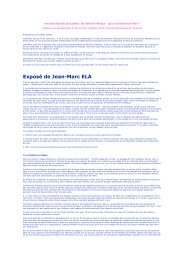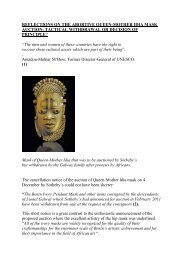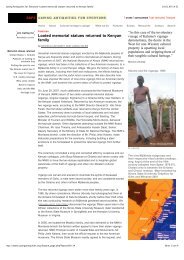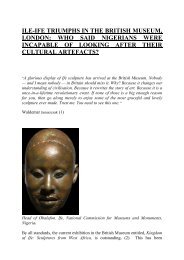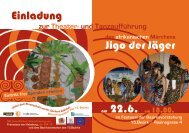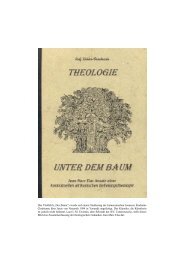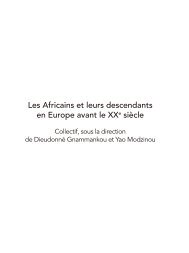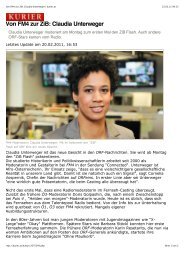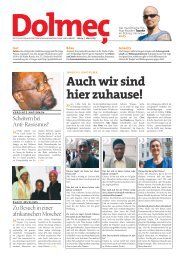White charity
White charity
White charity
- No tags were found...
Create successful ePaper yourself
Turn your PDF publications into a flip-book with our unique Google optimized e-Paper software.
humanity as such.” Through strategies of marking, deconstructing, de-essentialising, historicisingand analysing whiteness, its power, its hegemony and the social inequalities which it creates aredeliberately challenged (Piesche 2005: 16f). Wollrad (2005: 21, translation TK) considers the“decentralisation of whiteness a political act of criticising relationships of dominance.”focus of Critical <strong>White</strong>ness StudiesThe Critical <strong>White</strong>ness Studies are not to be considered as one faculty in the academic landscape.Rather, it is an interdisciplinary approach and scholars from a wide range of Humanities and SocialSciences are involved in this field. Accordingly, different methodologies are used – with discourseanalysis and historiography as the most prominent, while much significance is attributed to Blackknowledge production (Wollrad 2005: 33, 119). Another characteristic is the interest in subjectiveexperiences. One focus of study is the construction of bodies, another is the question how whitepeople see Self and Other. The emphasis so far is laid on the historical production of becomingwhite, where inclusions and exclusions of individuals or groups are examined. In general, I wouldsay, the focus on the individual identity level takes turns with the focus on legal, social or politicalissues of a collective on a national level. Both, however have a strong focus on daily issues. In theGerman context, an astonishing high proportion of the writing about Critical <strong>White</strong>ness are aboutacademic faculties and how the power of whiteness is buttressed and manifested through knowledgeproduction in the academia, which thus became a “space of violence” – e.g. through silencing Blackknowledge (Kilomba 2005: 81).critique of Critical <strong>White</strong>ness StudiesThe main achievement of Critical <strong>White</strong>ness Studies, is in my opinion the shift from 'racism as adiscussion on white extremists or black people' – what Arndt (2005b: 348) refers to as the “isolationof the problem” – to the whole of the white society. To acknowledge that whiteness is denied out ofa “putative liberal attitude” (Arndt 2005a: 27, translation TK) and that “these myths of denial” are“not more innocuous than those of racist confessions” (Arndt 2005b: 340, translation TK) opens upthe political space to clearly name the various kinds of violences and responsibilities for it.According to Tißberger (2006: 91) and El Tayeb (2005: 7f), it is the liberal dominant culture itselfwho creates a racist atmosphere in Germany and who prohibits the relativisation of the dominantposition. 23At present, the Critical <strong>White</strong>ness Studies however, show some deficits. I believe that the fieldwhere they are currently applied is too narrow and that they can be made fruitful on a larger level.First, global issues are not addressed. With the exception of topics of migration, authors of Critical<strong>White</strong>ness Studies usually remain with their writing within national boundaries. Hence, topics such23 see colour blindness9



